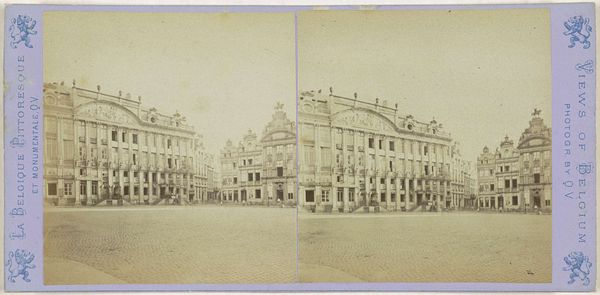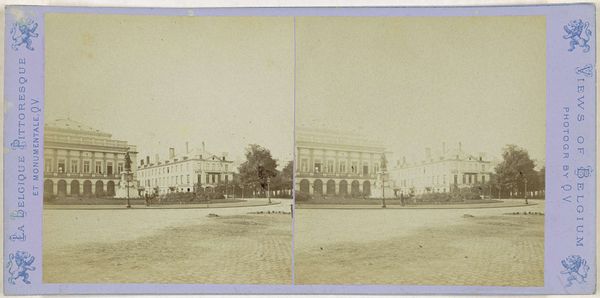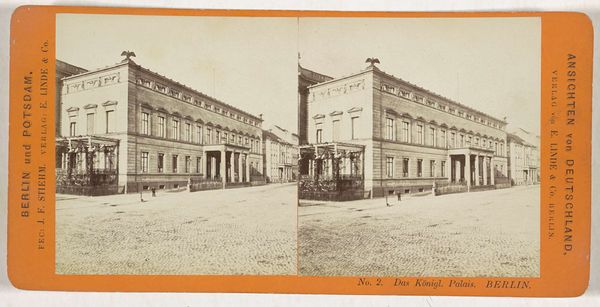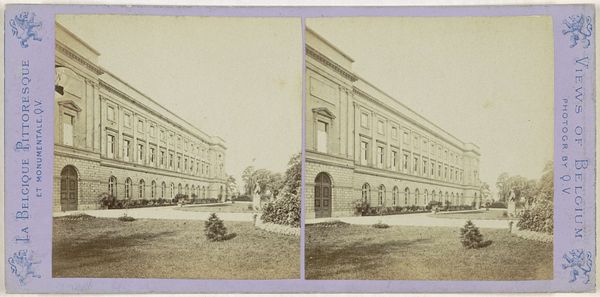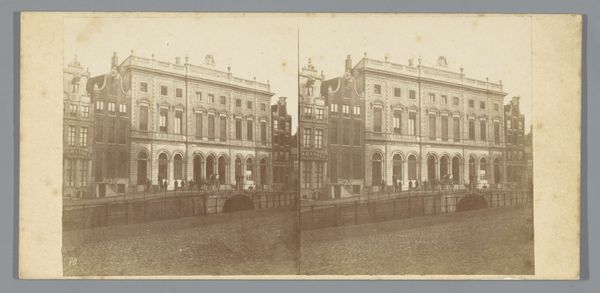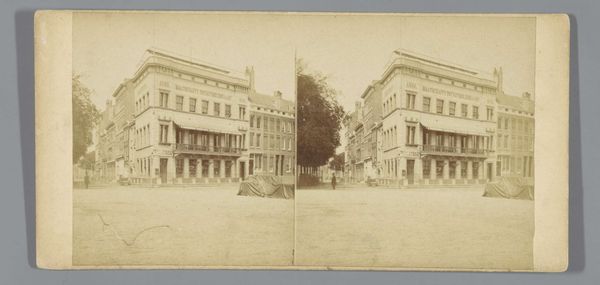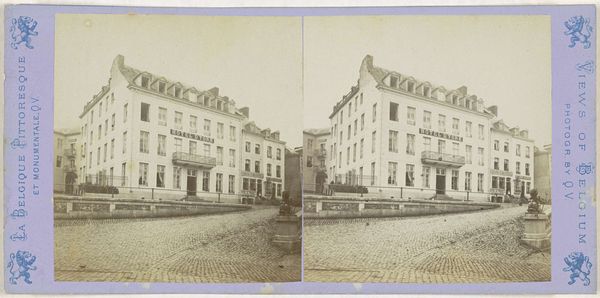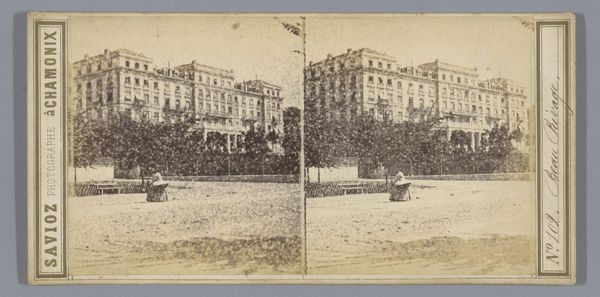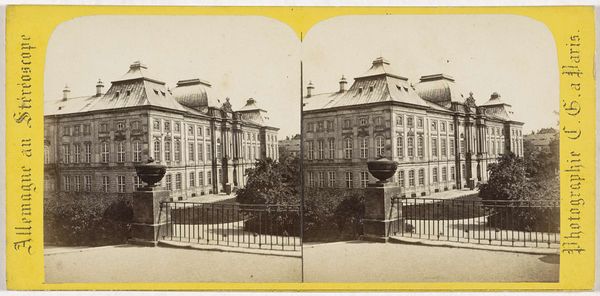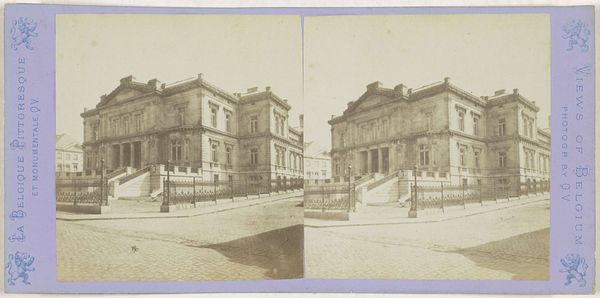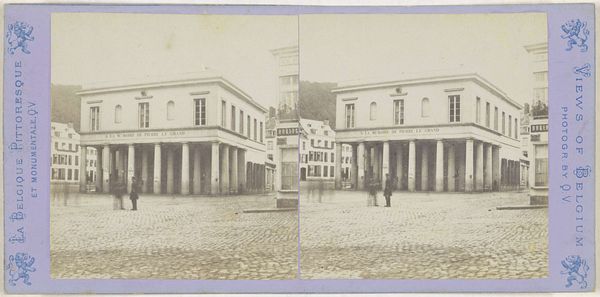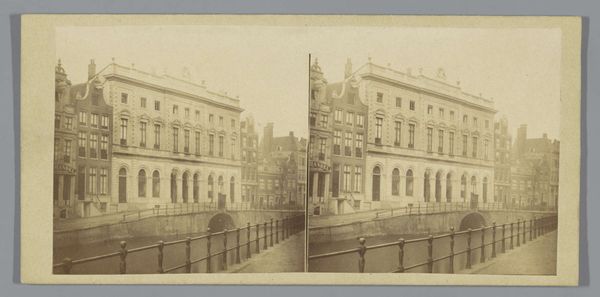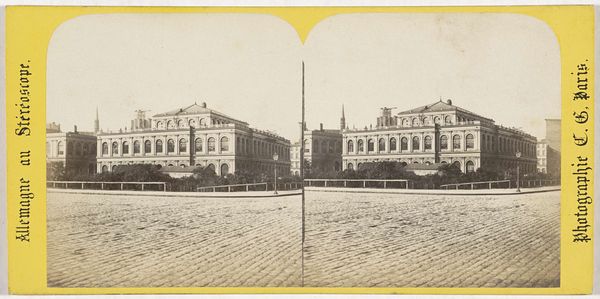
Gezicht op het Paleis van Karel van Lotharingen in Brussel 1866 - 1870
0:00
0:00
photography, albumen-print, architecture
#
photography
#
coloured pencil
#
cityscape
#
albumen-print
#
architecture
#
realism
Dimensions: height 86 mm, width 177 mm
Copyright: Rijks Museum: Open Domain
Curator: Before us, we have Jules Hippolyte Quévals’s "Gezicht op het Paleis van Karel van Lotharingen in Brussel," taken between 1866 and 1870. This albumen print showcases the Palace of Charles of Lorraine. Editor: It's so still, almost ghostly. The cobblestones dominating the foreground, stretching endlessly toward this rigid architectural structure. A stillness and rigidity that seem to convey authority and detachment. Curator: Precisely! The photograph's stillness reflects the enduring power and presence of the palace. Cobblestones often represent the path, but here, they contribute to the overwhelming grandeur surrounding it. Note the small figures near the building; they signify the everyday against the institutional power structure. Editor: The figures certainly do contextualize the palace's scale and offer insight into how citizens move within spaces constructed by people with power. Palaces symbolize centralized governance, which has often marginalized diverse voices. How does this image engage with narratives of access and exclusion? Curator: Indeed, palaces as emblems. However, in photographs like this, these imposing facades start existing also as repositories of collective memories. A touchstone, perhaps. Take, for example, the columns, a motif that borrows heavily from classical antiquity: the repetition of that visual language acts as a visual echo, legitimizing that architecture and what it houses with the historical precedent and legacy of those other cultures. Editor: Those historical lineages you mention definitely raise crucial questions about the values imposed upon those represented in visual media such as this image. Images like this also helped forge national and cultural identities. In that respect, how might they shape or misshape the identities of those existing within it? Curator: Interesting questions. These kinds of urban landscape photographs offer insights into cultural identity as they serve as both objective documents of the city and instruments to influence civic and national pride, embedding historical legacies in plain view and plain sight. Editor: A perspective that acknowledges that what we choose to frame, archive, and present holds political potency and offers insight into a deeper awareness of social complexities, visual symbolism and critical viewing practices. Thank you for helping me unpack what the palace, its symbols, and ultimately its reproduction signifies.
Comments
No comments
Be the first to comment and join the conversation on the ultimate creative platform.
